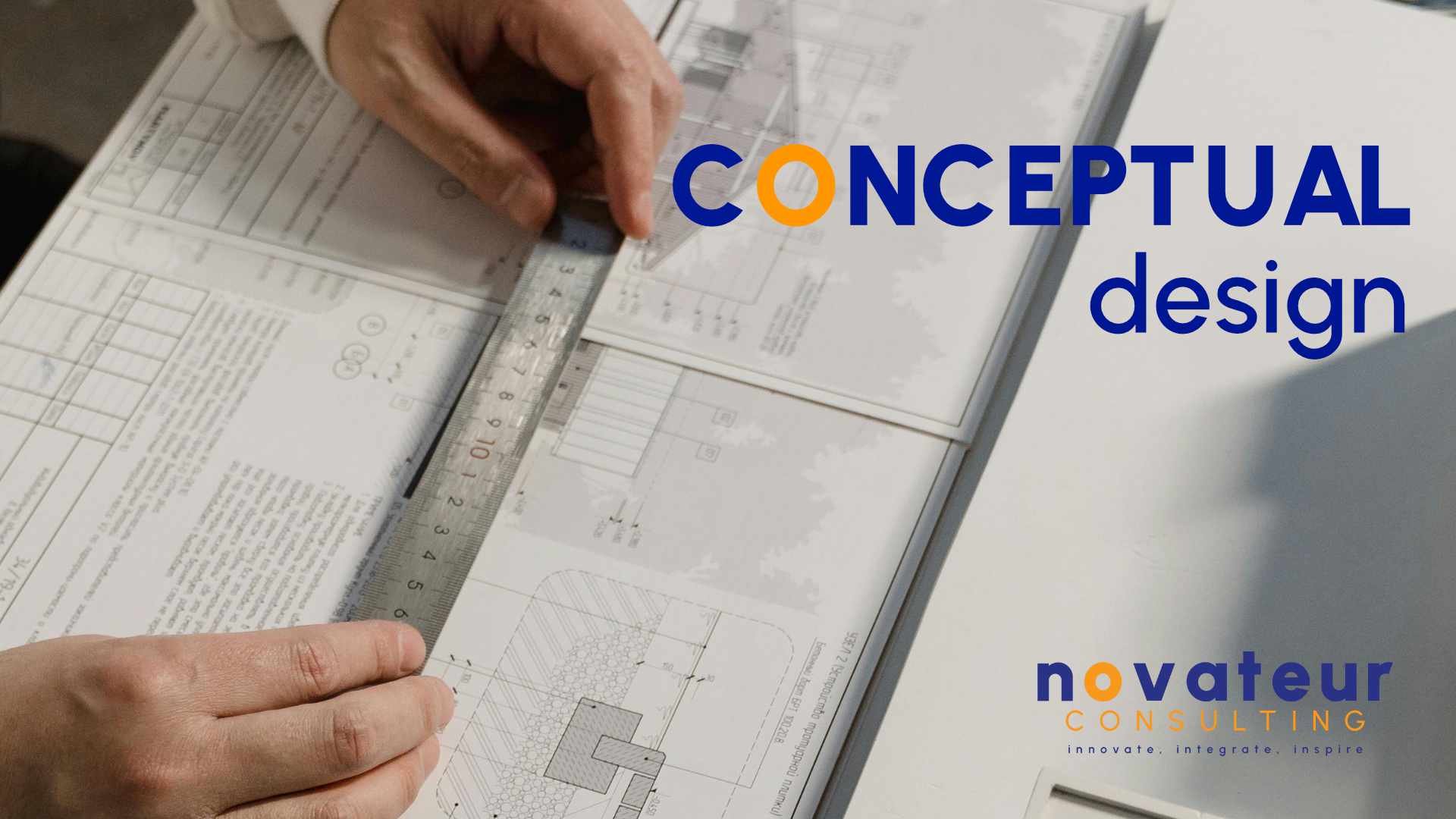Conceptual Design: The Cornerstone of Innovation
03, Sep 2025
145
In the dynamic business realm, innovation is not merely an aspiration but a necessity for sustained growth and relevance. Conceptual design emerges as a pivotal phase in product and service development, bridging the gap between abstract ideas and tangible realities. It is the crucible where creativity meets strategy, where visionary concepts are molded into viable blueprints primed for market triumph2. The Novateur Team delves into the essence of conceptual design, emphasizing the critical roles of vision and purpose, and illustrates how these elements can empower organizations in this transformative process.
Defining Conceptual Design
Conceptual design is the foundational stage in the design process, where broad ideas and solutions are developed4. It involves defining the problem, generating possible solutions, and exploring potential approaches4. This phase focuses on visualizing potential approaches rather than creating detailed plans4. Conceptual design ensures that all stakeholders share a common vision, acting as a guide towards a successful and practical final outcome4. It is through this process that raw and unstructured ideas are transformed into a specific and operational framework6.
Conceptual design is not solely about aesthetics; it is about solving problems, considering user needs, and imagining the bigger picture4. It lays the strategic foundation for a brand’s visual identity, shaping the core message and positioning before diving into specifics9. By identifying customer needs, testing feasibility, increasing practicality, establishing relationships, enhancing teamwork, and accelerating project timelines, conceptual design ensures that products and services resonate with their intended audience9.
The Primacy of Vision
At the heart of any impactful design lies a strong vision5. Vision sets great design apart from mediocrity and involves a deep understanding of the project’s objectives, the client’s identity, and the audience’s needs5. A logo or layout born from this clarity of purpose communicates meaning and evokes emotion5.
Vision requires taking a step back from the computer and focusing on brainstorming, sketching, and exploring ideas5.This process fosters creativity and originality, allowing the designer to craft a solution tailored to the unique needs of the project5.
The Significance of Purpose
Purpose complements vision by providing a clear understanding of what the design aims to achieve. Conceptual design plays a crucial role in the design process, bridging the gap between an abstract idea and a tangible final product1. By focusing on the holistic visual representation of an idea from development to execution, conceptual design serves several essential purposes1. These include:
- Clarity of Vision: Establishing a clear vision for the project, ensuring that all team members are on the same page and working towards a common goal14.
- Enhanced Creativity: Encouraging creative thinking and innovation, allowing designers to explore various possibilities without being constrained by technicalities or specifics1.
- Improved Decision-Making: Facilitating early decision-making by identifying potential challenges and opportunities, allowing the design team to make informed choices and prioritize essential aspects of the project1.
- Easier Troubleshooting: Identifying potential issues during the conceptual design phase, allowing design teams to address these concerns proactively and prevent costly and time-consuming changes at later stages of the design process1.
- Flexibility and Adaptability: Allowing for a certain level of flexibility, as it is easier to make changes or adjustments at this stage to accommodate new insights, feedback, or changes in project requirements1.
- Faster Project Completion: Expediting the design process by addressing potential problems, establishing a clear vision, and making informed decisions early on, resulting in faster project completion and reduced time to market1.
The Conceptual Design Process
The conceptual design process is a systematic method that turns initial ideas into well-defined plans4. By carefully improving each component, it ensures the final design meets both functional and aesthetic goals4. The detailed steps in this process include:
- Identify Goals and Requirements: Understanding the problem and clearly defining the goals and any limitations or restrictions4.
- Generate Ideas: Gathering ideas through creative thinking sessions, using tools such as mind maps or mood boards to explore different solutions410.
- Create Initial Sketches or Mockups: Drawing rough sketches or wireframes to visualize ideas, focusing on how things work and flow, not on making them look perfect4.
- Evaluate Feasibility: Assessing if each idea is realistic, considering factors like cost, practicality, and whether it meets the goals4.
- Present the Concept: Sharing the design idea with others to get their feedback and using their input to improve the concept before moving to the next stage4.
Novateur Consulting: Your Partner in Conceptual Design
Novateur Consulting understands the complexities of business and offers comprehensive solutions and services to support your business as an extension of your team7. Their value creation strategy helps businesses succeed, empower people, create wealth, support their community, and provide value to their stakeholders7.
Novateur Consulting can support your conceptual design efforts by:
- Providing Expert Guidance: Offering experienced consultants who can guide you through the conceptual design process, ensuring that your project aligns with your business goals.
- Facilitating Creative Thinking: Conducting brainstorming sessions and workshops to help you generate innovative ideas and explore different design possibilities.
- Conducting Feasibility Studies: Assessing the practicality and viability of your ideas, helping you make informed decisions about which concepts to pursue.
- Developing Conceptual Frameworks: Creating structured frameworks that outline the key components of your design and ensure that all stakeholders are aligned.
- Providing Feedback and Iteration: Gathering feedback on your designs and iterating on them to ensure that they meet your needs and expectations.
By partnering with Novateur, you can ensure that your conceptual design process is efficient, effective, and aligned with your business objectives. Their expertise and support can help you transform your ideas into tangible realities, driving innovation and creating value for your organization.
Conclusion
Conceptual design is a critical aspect of the design process, providing a foundation for innovation and creativity8. It offers a comprehensive understanding of user needs, promoting effective design strategies across industries8. By understanding its significance and applying it in real-world scenarios, the design process can be significantly refined, leading to optimal output8. Therefore, conceptual design holds paramount importance in shaping the future of design, enhancing user experience and functionality8. With a clear vision, a well-defined purpose, and the support of Novateur Consulting, you can unlock the full potential of conceptual design and drive innovation in your organization.
share Share now















